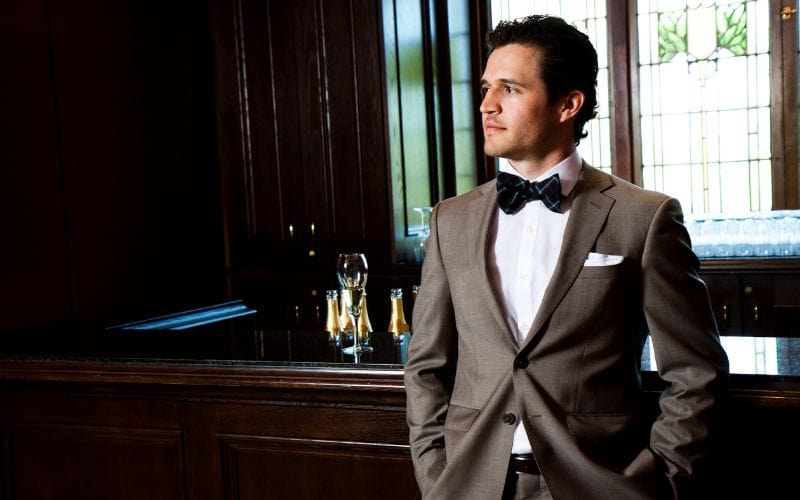In baseball, a player who fails seven out of ten times is considered a superstar. A .300 batting average is a ticket to the Hall of Fame, proving that consistent, career-defining success isn’t about never striking out, but about maximizing the impact of your rare hits.
This is the Upwardpreneur mindset: we accept that the professional world—from the job interview to the boardroom negotiation—is a high-stakes arena where you must fail often to succeed grandly. Stop viewing the interview as a passive screening; see it as a limited-time opportunity to make a high-leverage pitch.
Your goal isn’t to be safe, polite, or merely qualified; your goal is to be the most convincing investment by articulating a unique strategic value that justifies the inevitable cost of your occasional “strikeouts.”
Interviewing is often about psychology, perception, and fitting a specific (and sometimes unstated) mold. Landing a job frequently involves selling yourself as the most likeable and effective solution to a hiring manager’s problem, not just as the person with the longest list of qualifications.
10 High-Impact Interview Personalities that Read the Room and Demonstrate High Value
Since you are looking for distinct, high-impact personas that balance firmness (competence, conviction, clear boundaries) and likeability (rapport, team fit, enthusiasm) and are willing to “swing for the fences,” here are 10 interview personalities to adopt for maximum differentiation.
| Personality | Core Strategy (The “Likeable” Aspect) | “Firmness” Trait (The “Big Swing” Aspect) |
| 1. The Solution Architect | Uses a consultative approach, asking smart, high-level questions about the company’s challenges and vision. | Reframes the job description by saying, “My focus would be on solving X and Y problems, which seems to be the highest priority for the team.” (Sets the agenda.) |
| 2. The Invested Partner | Treats the interview like a mutual due diligence process. Shows genuine enthusiasm for their product/mission. | Clearly states non-negotiable needs (e.g., “For me to deliver those results, I need full ownership over the budget for [specific tool/resource].”). |
| 3. The Calibrated Expert | Is calm, deliberate, and uses silence effectively. Answers questions with confidence, not eagerness. | Gently corrects a premise or assumption the interviewer makes about a problem or industry trend. (Demonstrates superior knowledge.) |
| 4. The Value Translator | Answers every question by quickly relating past actions to future commercial impact for the company. (Speaks their language: money/results.) | When discussing salary, firmly articulates the ROI (Return on Investment) they represent, backing it with specific metrics. |
| 5. The Curious Learner | Focuses on transferable skills and a growth mindset. Asks who they will learn from and how the role will evolve. | Directly addresses a gap in their experience, immediately pivoting to a plan: “While I haven’t used X software, I’ve already signed up for a course and will be proficient within 30 days.” (Owns the deficiency and provides a solution.) |
| 6. The Candid Communicator | Is exceptionally transparent about their working style, weaknesses, and preferred feedback mechanisms. | Asks a direct, potentially uncomfortable question about the company’s actual work-life balance or recent team conflicts. (Shows courage and boundary-setting.) |
| 7. The Empathetic Leader | Emphasizes team success, mentoring, and emotional intelligence. Connects with the interviewer on a human level. | Clearly outlines their management philosophy, stating, “My direct reports know I expect extreme ownership, and I hold weekly 1:1s to ensure accountability.” (Sets high performance standards.) |
| 8. The Brand Enthusiast | Is hyper-focused on company culture and values, using the company’s language and mission in their responses. | Challenges a current practice or strategy of the company in a respectful but concrete way: “I noticed your competitor is using X strategy; what is the thinking behind your choice to stick with Y?” (Shows critical engagement.) |
| 9. The Challenger | Uses well-prepared, thoughtful questions to drive the conversation rather than simply react to prompts. | Asks the interviewer directly, “Based on this conversation, what, if anything, gives you pause about my fit for this role?” (Forces them to articulate objections immediately.) |
| 10. The Storyteller | Uses vivid, memorable narratives for every behavioral question, focusing on conflict, climax, and resolution (like a movie plot). | Insists that one of the final interview steps include a brief, low-stakes project/presentation so they can demonstrate their ability rather than just talk about it. (Confidently pushes for a performance test.) |
The “Swinging Big” Mentality (The .300 Batting Average)

Adopting one of these personas carries risk. Asking an uncomfortable question, setting firm boundaries, or gently challenging a company’s strategy might alienate a cautious hiring manager (the “strike out”).
However, the benefit is that when it hits, it hits big:
- You Differentiate: You are instantly memorable among a sea of safe, polite candidates.
- You Command Respect: Firmness, backed by competence, signals high value and strong conviction. You also preemptively short-circuit any scammers, which there are a lot of in the current job market.
- You Pre-Qualify the Role: The firm boundaries you set (e.g., about resources, ownership, or work-life balance) help ensure you’ll only accept a job that’s truly a good fit, saving you time and frustration later.
1. The Power of “The Bridge” (Connecting Past to Future)
A major challenge for candidates with established careers or long experience is overcoming the perception of being “behind the curve” or “overqualified.” The “Bridge” technique makes your experience an asset, not baggage.
| Component | Strategy (What to Write) | Example Dialogue (The Zing) |
| The Adaptability Bridge | Frame your longevity not as time passed, but as a demonstration of successful adaptation through multiple economic cycles and technology shifts. | “I’ve not only survived two recessions and three major tech platform shifts, but I’ve successfully led my teams through them. That’s not just experience; that’s proven resilience and the ability to pivot under pressure.” |
| The Stability Bridge | Highlight your dedication to a specific craft or company as a sign of commitment and stability, traits often missing in today’s rapid job-hopping environment. | “I stayed at [Former Company] for 12 years because I’m not looking for a stepping stone; I’m looking for a place to build a legacy. My focus is on long-term, compounding value, not short-term trend chasing.” |
| The Wisdom Bridge | Use the “firmness” moment to show you can prevent the company from repeating common mistakes, framing your age/experience as a risk mitigator. | “I’ve made, and seen others make, that exact mistake 10 years ago. Instead of going with a ‘flash-in-the-pan’ solution, my recommendation is to first establish a bulletproof foundation in X, which saves us 6 months of rework down the line.” |
2. The Four Pillars of American Business Values
Interviewers often hire based on a perception of “cultural fit,” which often aligns with core, traditional American workplace values. The high-impact candidate should explicitly and quantifiably embody these in their stories.
| Value | How to Demonstrate (The Zing) | Firmness/Likeability Balance |
| Grit (Resilience) | Tell a story where the initial task was impossible (high difficulty, low resources), and you kept going, showing endurance. | Firmness: “I owned the outcome, regardless of the hurdles.” Likeability: “I kept the team’s spirits high during the entire ‘death march’ phase.” |
| Extreme Ownership | When discussing a project, use the phrase “I own that” or “My accountability was…” even when discussing an area of failure or setback. | Firmness: You take the blame/responsibility first. Likeability: You immediately pivot to the lessons learned and the systemic fix you implemented. |
| Pragmatism & Efficiency | Focus on the simplest, most cost-effective solution first. Show you value results and the bottom line over overly complex, academic solutions. | Firmness: “We scrapped the $50k software because a simple Google Sheet and better process delivered the same result faster.” Likeability: You respect the company’s resources and don’t waste time on vanity projects. |
| Direct Communication | Show you can deliver and receive honest feedback gracefully. Use clear, concise language without corporate jargon (unless the job demands it). | Firmness: “I told the VP, ‘This project will fail unless we get X resource.’ I stated the facts clearly.” Likeability: “I followed up with a detailed plan that mitigated the risk, showing I wasn’t just complaining.” |
3. What To Do Today
→ The Candidate’s Homework (Before the Interview)
- Map Your Stories to the 10 Personas: Take your top 5 professional achievements and rewrite them to fit at least 3 of the 10 personalities (e.g., How does this achievement sound when told by The Solution Architect? What about The Invested Partner?).
- Define Your 1 Non-Negotiable: Determine one thing you need to be effective (e.g., specific training, resource budget, flexibility). This is your firmness benchmark. If the company rejects it outright, it wasn’t the right fit anyway.
- Find the “Flaw”: Read the company news or earnings reports and find one area where the company is struggling (e.g., slow growth in one market, a failed product). Prepare a respectful question that suggests you’ve already thought of a solution. This is your “Big Swing” to demonstrate The Challenger or The Calibrated Expert.
By combining the 10 distinct personality types with these actionable, value-centric strategies, your blog post will not only offer fascinating psychology but also a high-risk, high-reward tactical playbook for candidates who are ready to make a high-impact impression.
The Upwardpreneur Angle: Make Yourself Irresistibly Exclusive
The difficult job market doesn’t require you to be safe; it requires you to be strategic. The goal of this high-impact interviewing approach is not to be the most qualified, but to be the most convincing investment.
The “Upwardpreneur” candidate understands that a job interview isn’t a passive screening—it’s a pitch session. By adopting one of the 10 personas and applying the three bridge techniques, you transform yourself from a mere applicant into a strategic partner and a de-risked asset.
Final Actionable Insight: The $1 Million Dollar Question
Before walking into your next interview, look at your resume and ask yourself this single question:
“If I were a hiring manager about to invest one million dollars in an employee (salary, benefits, resources, and training), does this person demonstrate the clarity, conviction, and return on investment (ROI) that makes my $1M decision easy?”
If the answer is anything less than a resounding “Yes,” you haven’t been firm enough, memorable enough, or strategic enough.
Go in, swing for the fences, and redefine the standard of what it means to be a modern hire. The entrepreneur always bets on themselves—it’s time you did too.
- How to Install an Automated Solar Pump System for Watering Your Remote Homestead Raised Bed Garden - October 13, 2025
- Balancing an AI Edge: How Digital Marketing CEOs Are Mastering Content Strategy - October 1, 2025
- 10 High-Impact Job Interview Personalities You Can Use to Stand Out from Other Applicants - September 18, 2025



